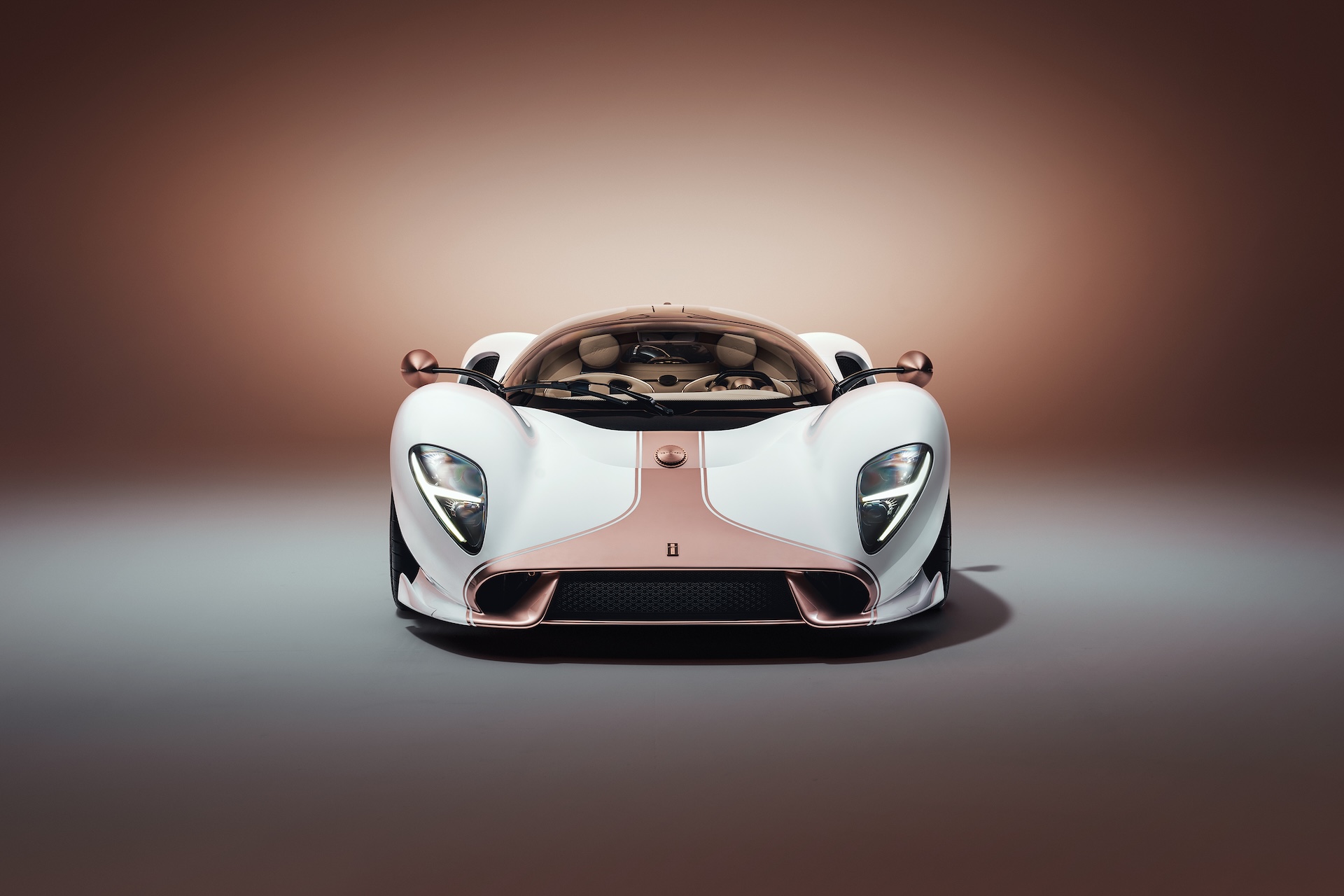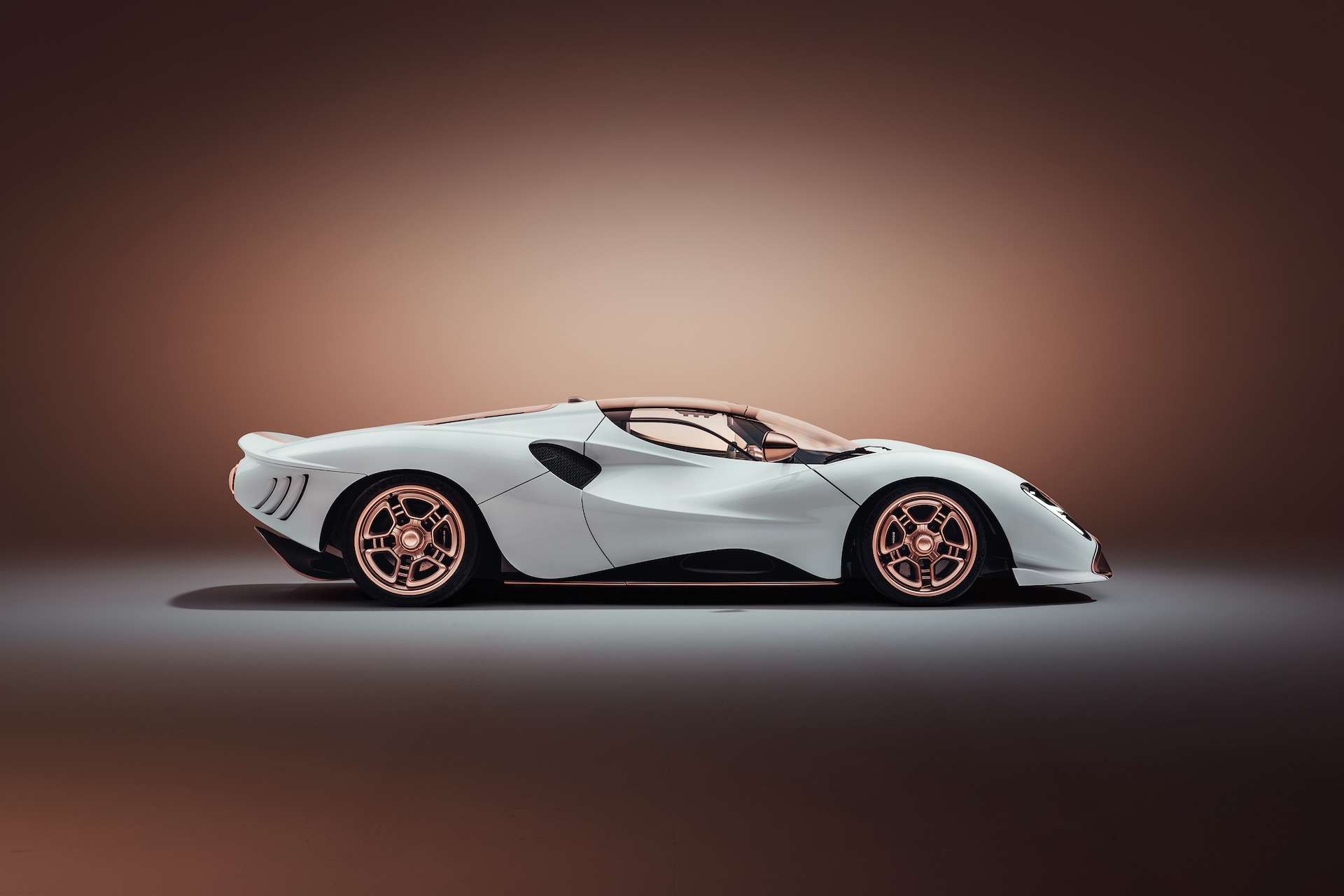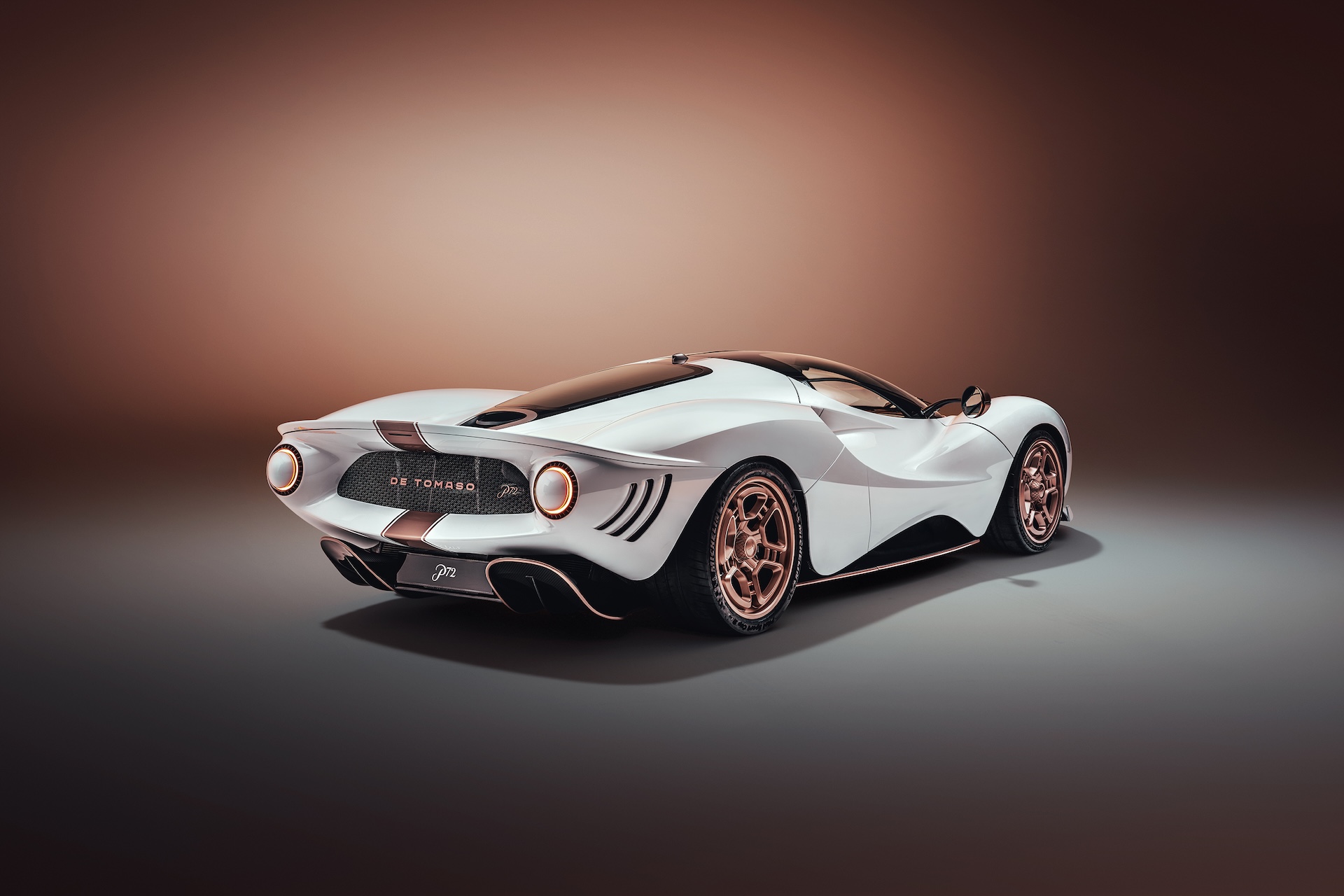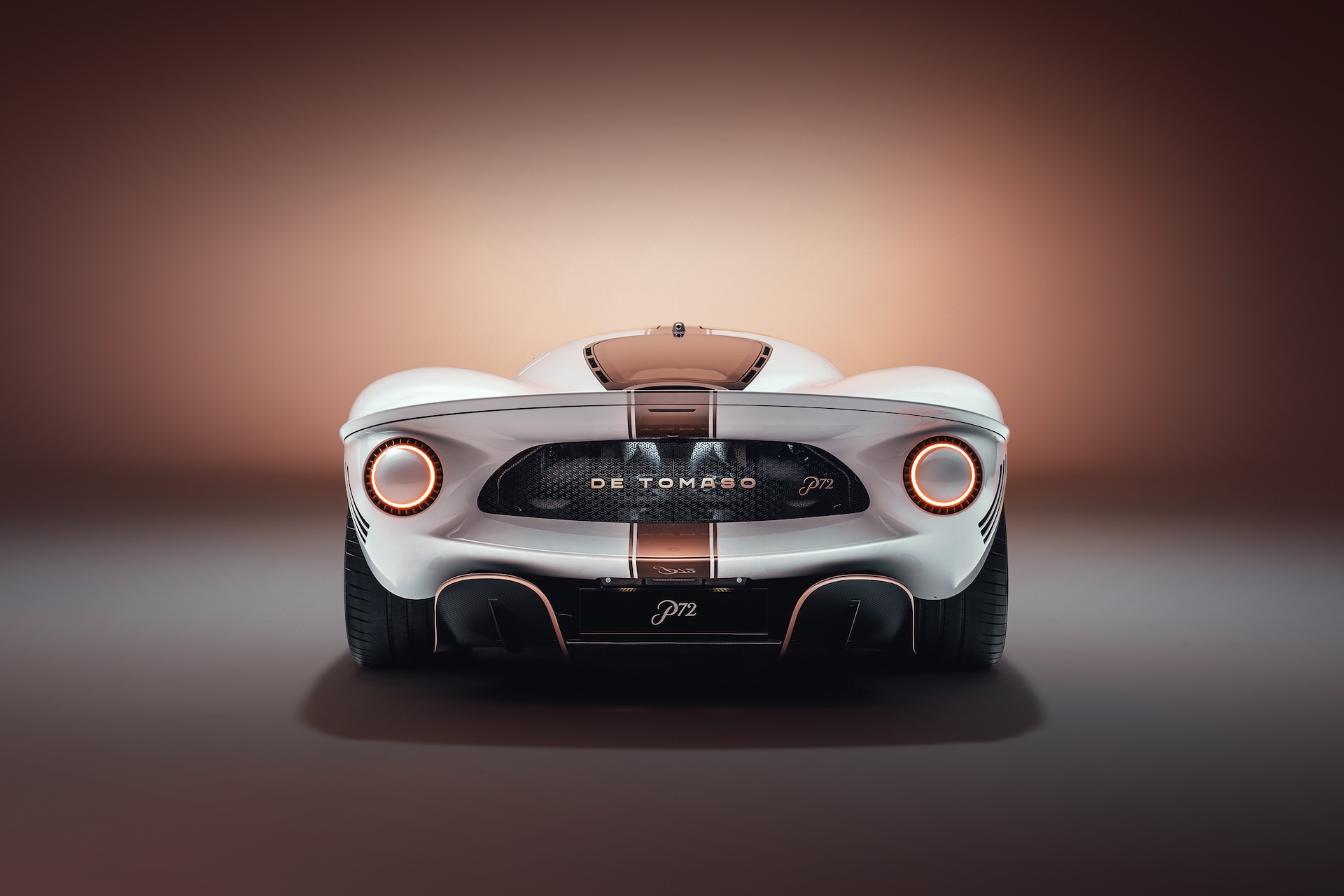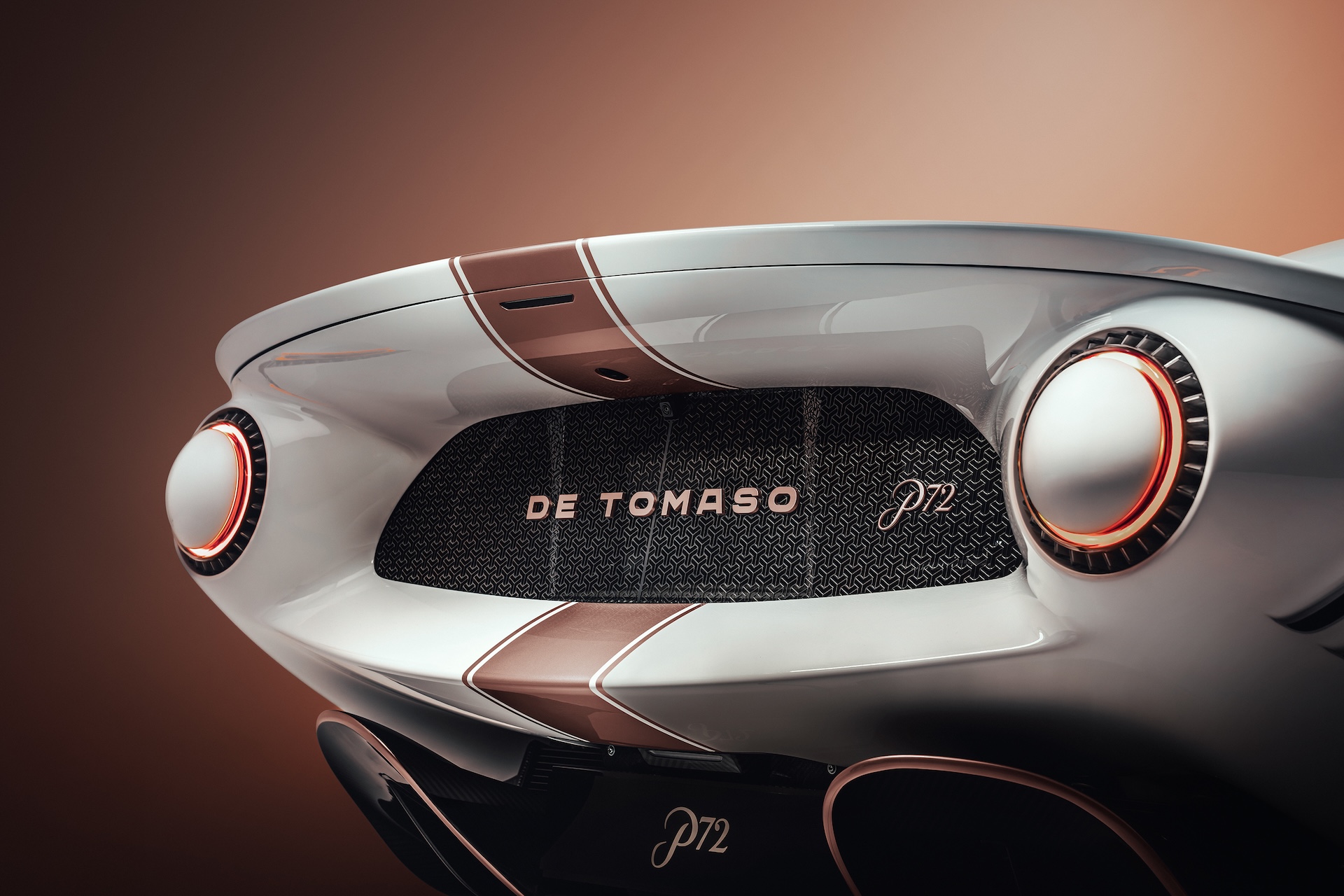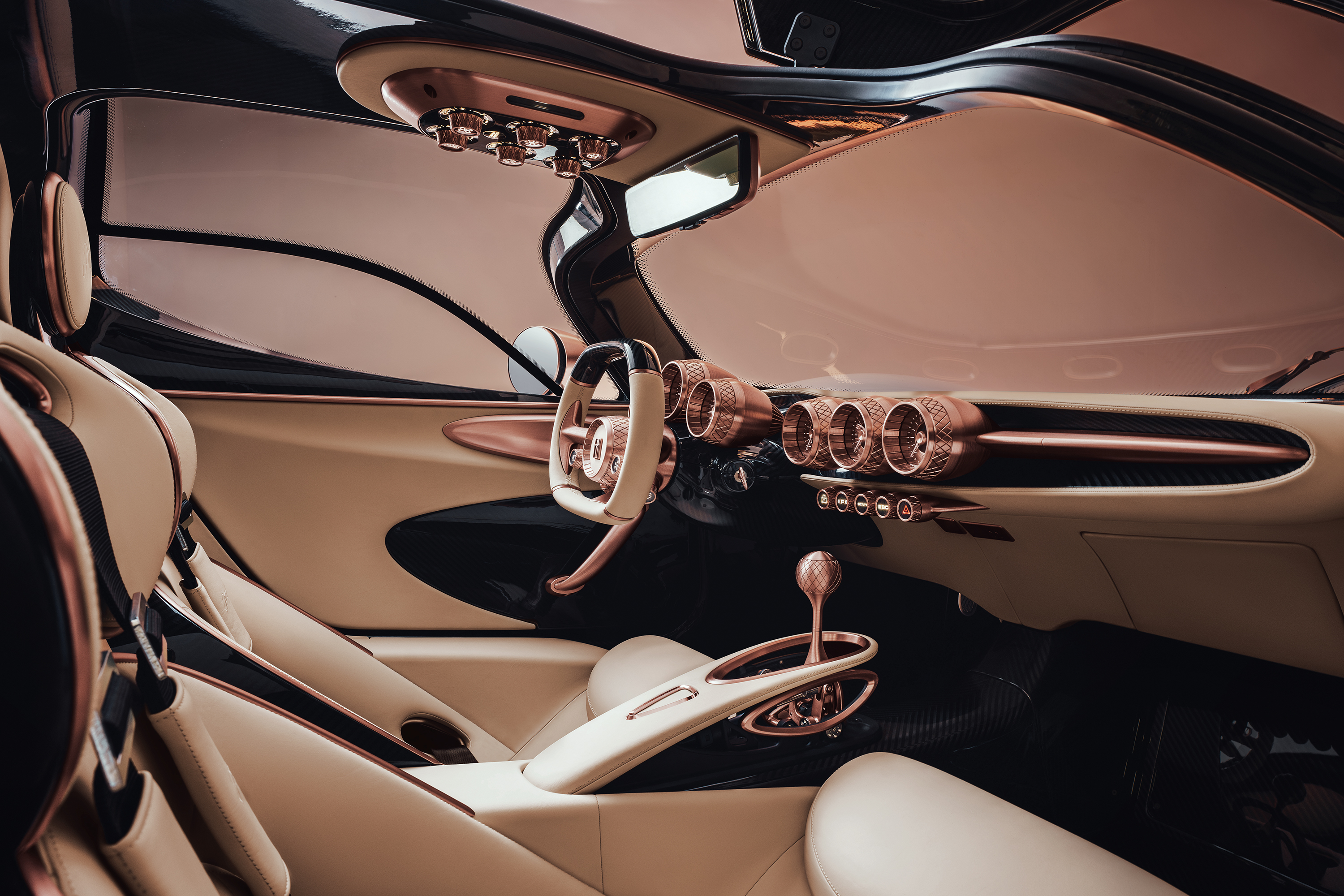
De Tomaso is back with a new production-spec supercar called the P72. Pretty much everybody loves it, and for good reason—it’s gorgeous. Not only that, but it’s a staunchly old-school affair, rocking a 700-horsepower, 605 lb-ft supercharged 5.0-liter cross-plane Ford Coyote V8 that’s been tuned by Roush and mated to a six-speed manual transmission.
Officially billed as “a tribute to an era when man and machine moved in perfect harmony,” this glorious, screen-free exercise in nostalgia is stubbornly analog in its details, too; you could almost call it basic. But, if you haven’t heard, basic is cool again. Here are four refreshingly throwback touches on the P72 that deserve to make a comeback on performance cars that aren’t Italian carbon unobtanium.
That Shifter
The inclusion of a manual gearbox would be analog enough on its own, but De Tomaso went several steps further by blessing the P72 with a shifter linkage that’s completely and beautifully exposed.
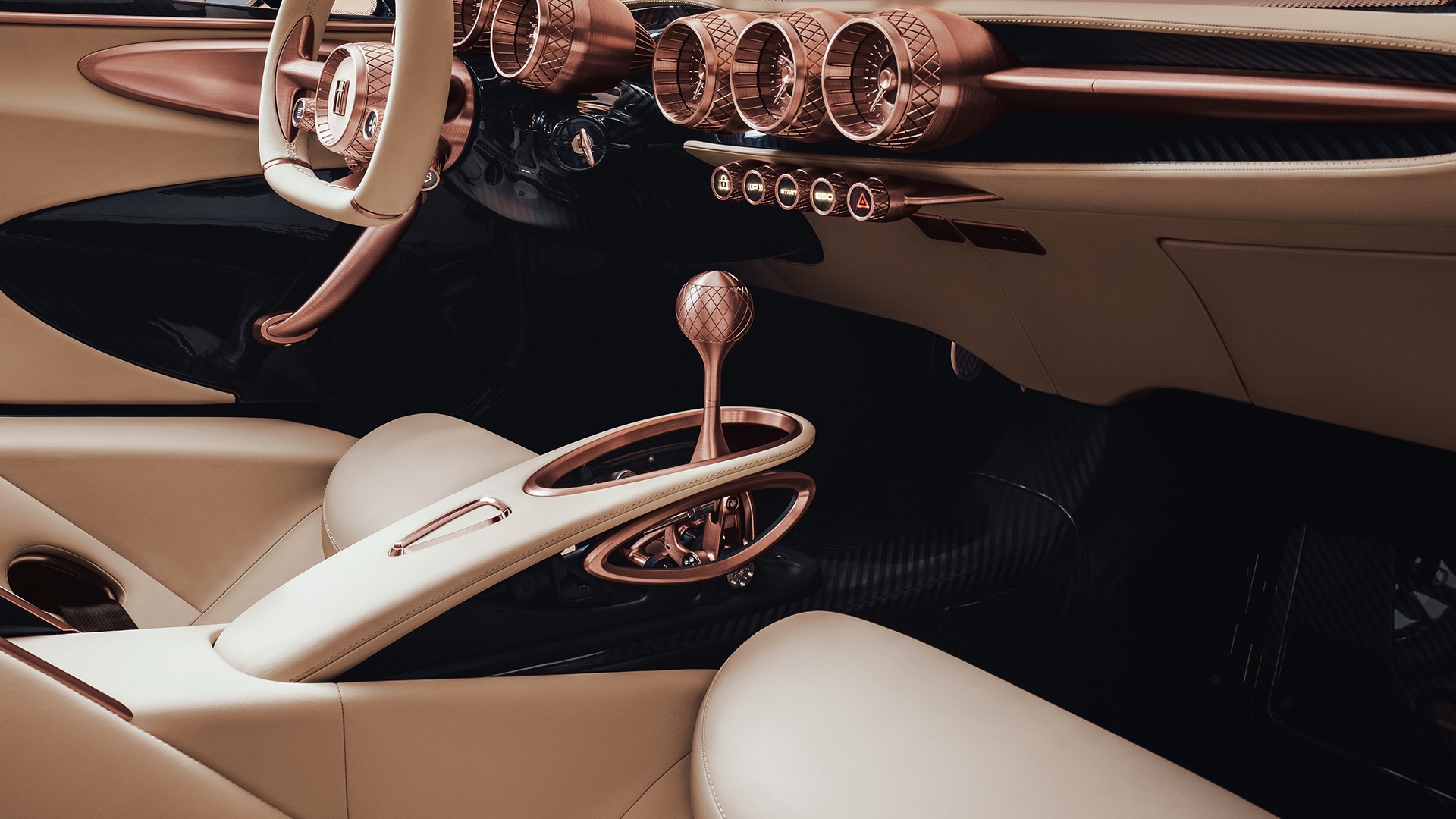
Granted, that other boutique Italian supercar maker Pagani has been doing similar shifters for a while, but it doesn’t make the P72’s setup any less glorious. Also, there’s something to be said about this one’s swoopy, very extra, almost art deco brushed-bronze style that you don’t get with the Paganis.
You Still Twist a Key to Start It
Like pretty much every performance car post-S2000 and every car period post, like, 2012, the P72 appears to feature push-button start. Note the “START” button in the center of the row of five located below the three analog dials (more on those later). Look to the left of this, however, is something many modern drivers have not seen in a while: a slot for a key.
Top Gear got hands-on with this car and detailed the start-up process:
- Place the leather-lined key fob into the little triangular recessed section aft of the gear knob and press down.
- Remove the milled physical key into the steering-column slot and twist.
- Press the START button.
Unnecessary? Yes. Convoluted? Sure, maybe a little. Cool as hell? You bet.
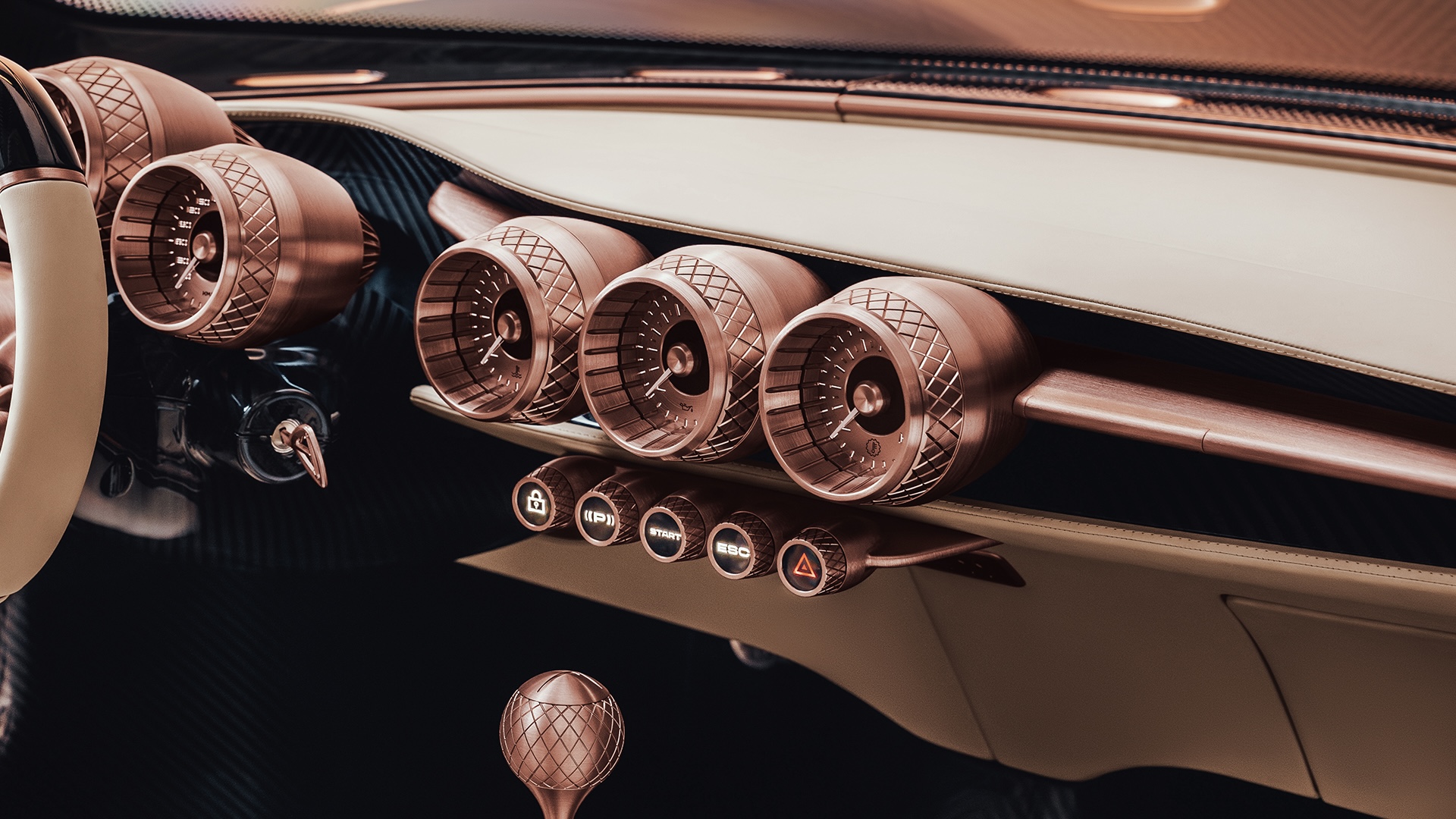
Welcome Back, Datsun 240Z
As another wholly unnecessary but pointed design decision, the P72 dedicates a whole lot of dashboard real estate to three analog gauges measuring oil pressure, oil temperature, and battery voltage. It’s a classic race car layout stemming from an era of mostly endurance racers in which keeping an eye on that stuff really mattered.
It trickled into road-going performance cars around the ’60s and stuck around for a while, but these days, its inclusion is mostly a nostalgia play. The old Datsun 240Z famously had a rendition of this, as did every Z car that followed, including the new one you can likely find at your local Nissan dealer.
So, yeah, there’s one thing the new Nissan Z has in common with the De Tomaso P72.
There Are No Drive Modes
Arguably popularized by the likes of BMW and later adopted by almost every new car available no matter how pedestrian, drive modes surprisingly aren’t a thing with the P72. Granted, the push-rod suspension system features dampers that are manually adjustable, but that’s it. No knobs or buttons that alter throttle response, steering weight, or how red your gauges are. You just get in it and drive.
On specs and facts alone, De Tomaso’s new baby sounds like it’ll be a car you’ll want to drive, too, ’cause it’s built around a carbon unibody monocoque, the entire body is also carbon, and its Ford-sourced V8 is assembled by hand and is said to feature a header design inspired by the ’60s. The six-speed manual’s gear ratios were tuned for entertaining in-gear performance, not top speed.
True to its name, only 72 of these things will ever be made, but between this and that one electric truck everybody won’t stop talking about, basic is back and hopefully the likes of Ferrari and Lamborghini will jump on the bandwagon soon.
Got a tip or question for the author about the P72? You can reach him here: [email protected]

